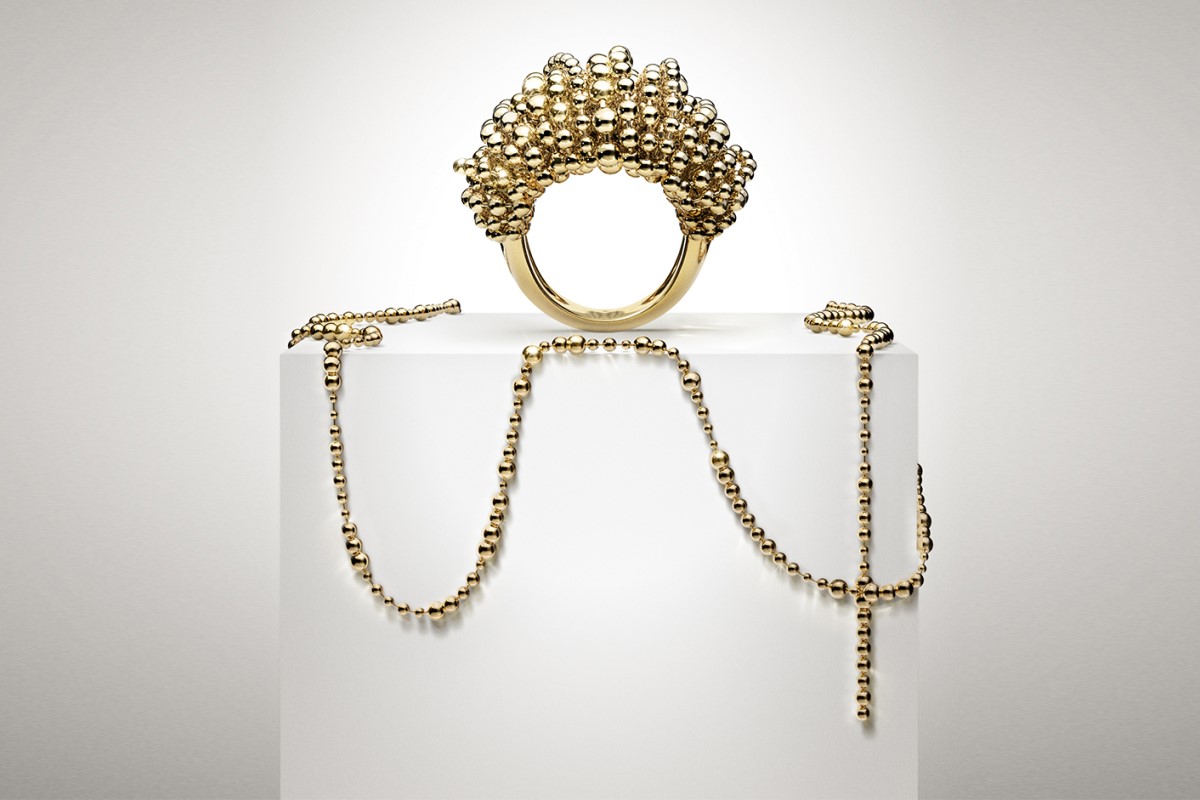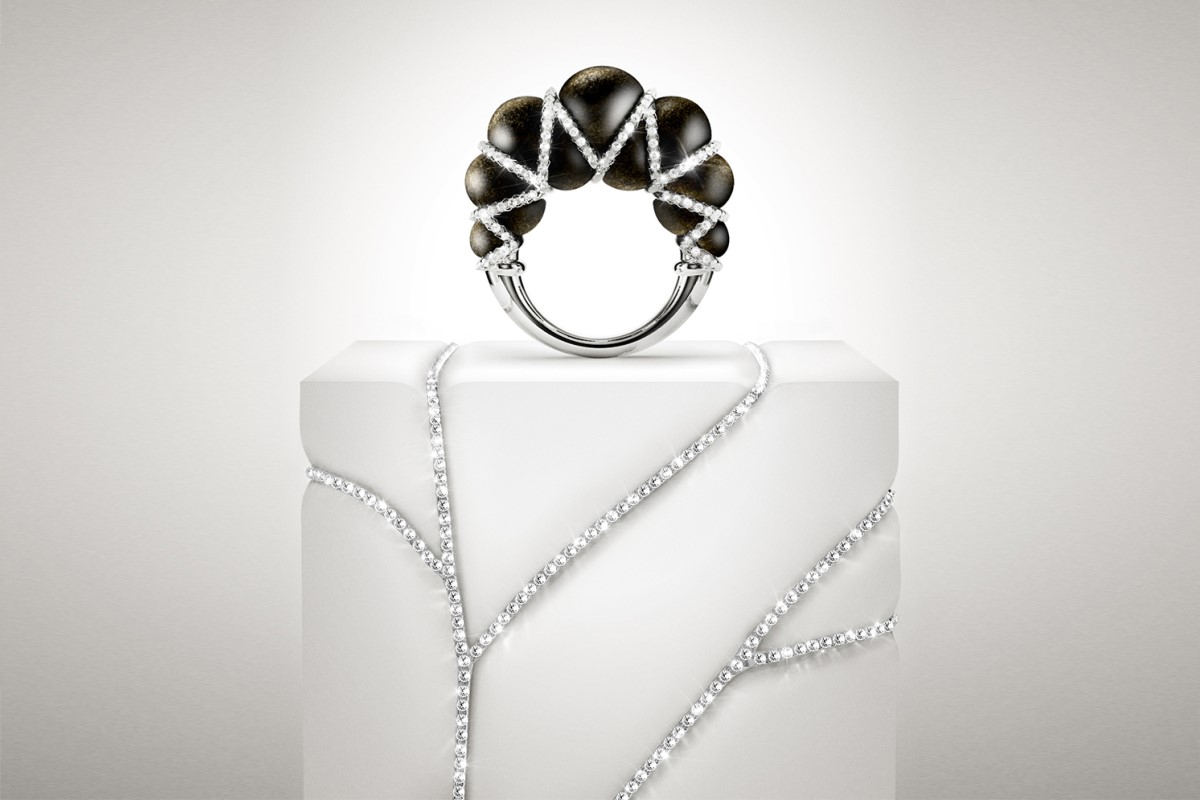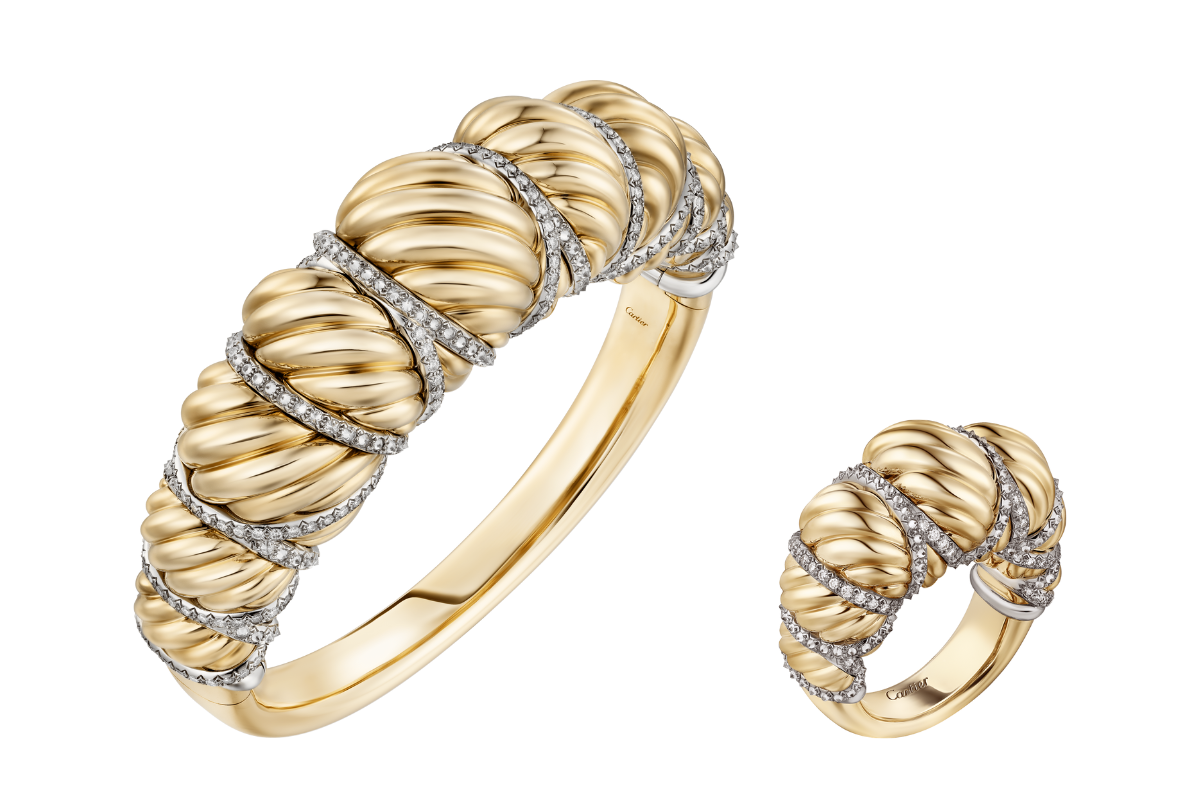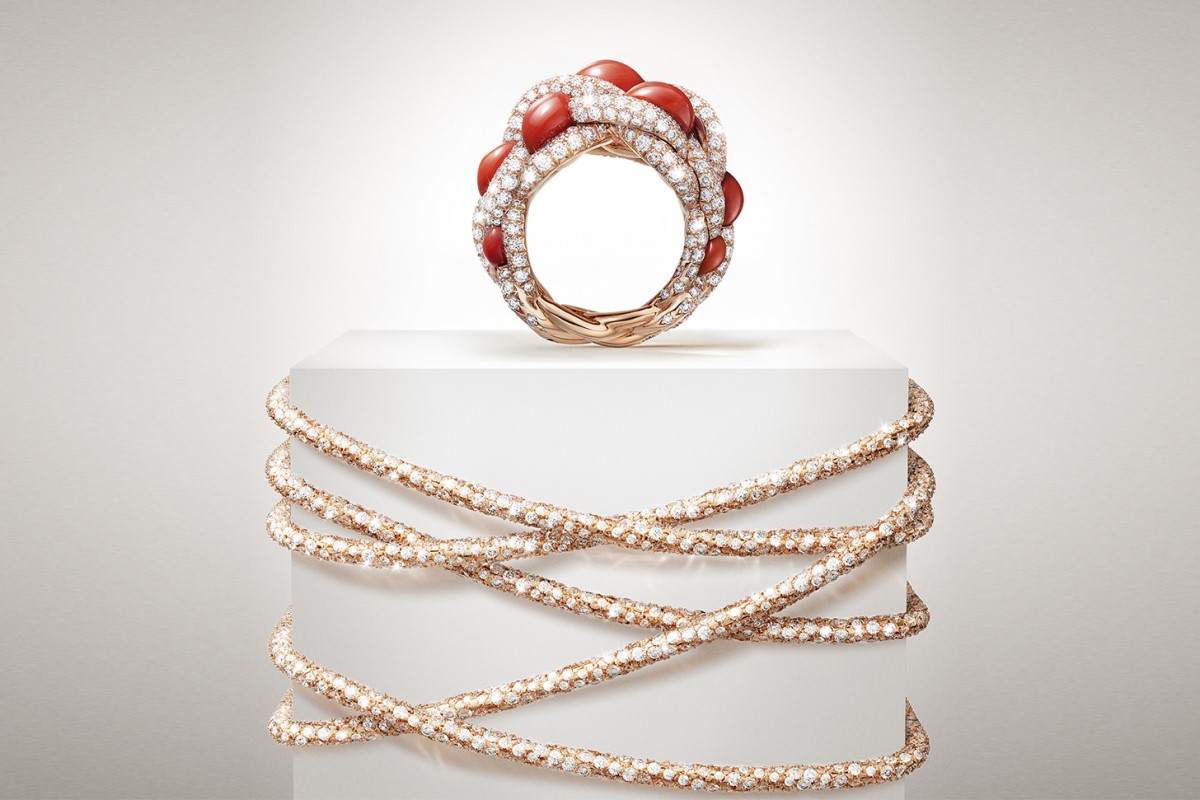CARTIER LIBRE TRESSAGE integrates gold craftsmanship and breaks through the boundaries of creativity
jewelry watches
jewelry watches

 Caption: Cartier Libre Tressage gold bead ring, yellow gold.
Caption: Cartier Libre Tressage gold bead ring, yellow gold. Caption: Cartier Libre Tressage Obsidian Ring, platinum, obsidian, diamonds.
Caption: Cartier Libre Tressage Obsidian Ring, platinum, obsidian, diamonds. Caption: Cartier Libre Tressage diamond bracelets and rings, yellow gold, platinum, diamonds.
Caption: Cartier Libre Tressage diamond bracelets and rings, yellow gold, platinum, diamonds. Caption: Cartier Libre Tressage coral ring, rose gold, coral, diamonds.
Caption: Cartier Libre Tressage coral ring, rose gold, coral, diamonds.